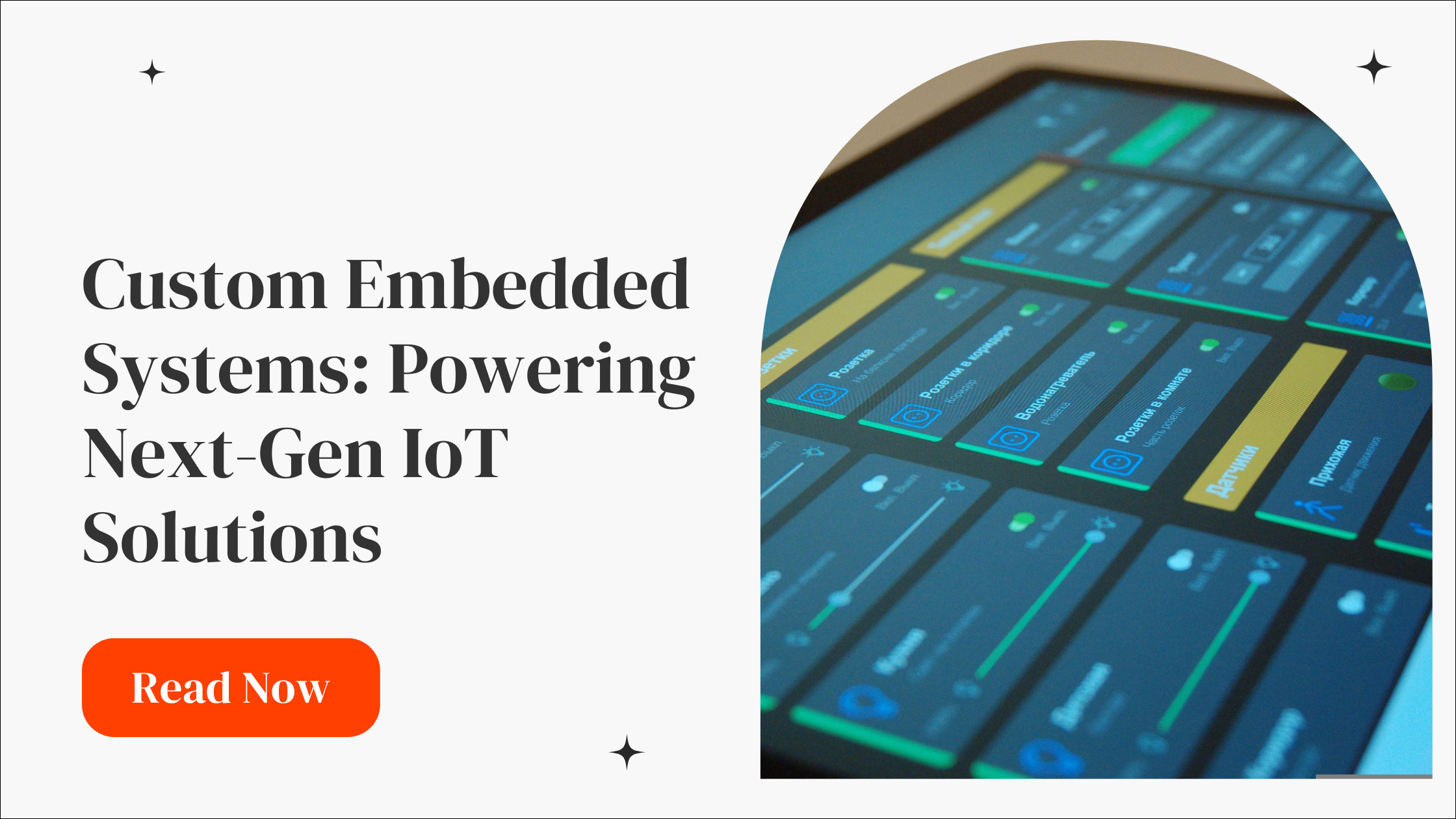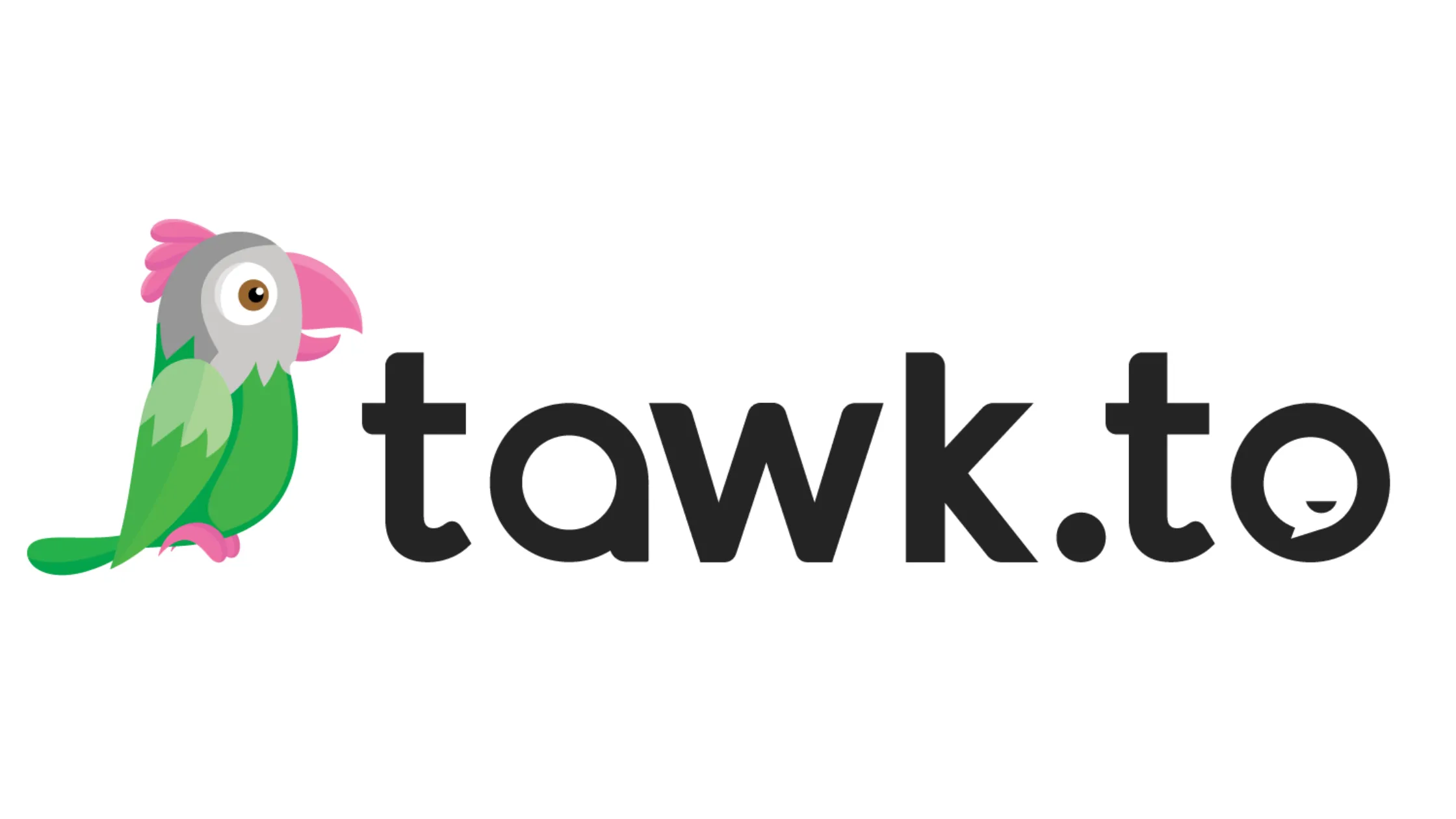
Custom Embedded Systems: Powering Next-Gen IoT Solutions
Discover how custom embedded systems power next-gen IoT solutions. Learn their benefits, real-world examples, key development steps, and future trends.
Custom embedded systems are the essential building blocks of any modern piece of tech, especially in the Internet of Things (IoT) space.
One could say that we're in the golden age of IoT, with AI-powered assistants managing homes and smart automation systems driving up operational efficiency for businesses.
These are all made possible with an assembly of embedded systems — hard-coded and wired for specific functions.
In this post, we'll take a look at custom embedded systems, their role in next-gen IoT solutions, and how companies can keep up with the rising demand for smarter products.
What are Custom Embedded Systems in IoT?
Custom embedded systems are hardware components tailored to perform specific tasks or functions within a larger device or product.
In the world of IoT, this could be anything from the microphone array in your smart home assistant to the low-energy Bluetooth systems in medical IoT devices.
The vast range of systems that fit this category is understandably massive. As such, it's better to remember the defining characteristics of embedded systems, which are:
- Primarily designed for minimal human interaction — Most embedded systems are designed to communicate with other hardware components. The exceptions are microphone arrays in voice-enabled devices, touchscreen display components, and other user-interfacing embedded systems.
- Hardware and software pair — All embedded systems come with a combination of hardware and software. Both make up the system core, working in tandem to process the input to generate an output.
- Purpose-specific design — Embedded systems are custom-fit to a specific function, unlike general-purpose devices such as personal computers or smartphones (although they are built with a handful of embedded systems). For example, the Wi-Fi module in a smart doorbell is a piece of hardware that works.
In addition to these specifications, it's worth noting that embedded systems are built on different types of Integrated Circuits (ICs) depending on their function. Some examples are microcontrollers (MCUs), Systems on a Chip (SoCs), and Field Programmable Gate Arrays (FPGAs).
Examples of IoT Embedded Systems
Below are some of the real-world examples of embedded systems in the IoT space:
- Wireless microcontroller with sensors — Products like the Google Nest Thermostat use low-power microcontrollers to analyze user preferences (through app controls) and patterns to optimize home temperatures.
- Video/motion sensors in embedded processors — Typically used for real-time detection in smart home security systems (i.e., Ring Video Doorbell 4).
- Smart health sensors — Microcontrollers equipped with biometric sensors designed to transmit information via Wi-Fi or Bluetooth from products (e.g., fitness trackers and cardiac monitors) to consumer apps or hospital systems.
- IoT wireless microcontrollers — Low-power systems with integrated wireless capabilities (often for device orchestration as well as managing Wi-Fi and Bluetooth connectivity), like ESP32 development boards.
Advantages of Custom Embedded Systems for IoT
There are different paths to building embedded systems.
They can go with off-the-shelf solutions, tap into open-source options, adopt a semi-custom approach (FPGAs), or go full custom.
Building a custom embedded system from scratch is definitely more challenging.
In addition to higher upfront costs, you'll also wrestle with longer development timelines. Not to mention the range of specialized expertise you'll need just to get the ball rolling.
Quick tip: If you're looking for a team to handle the software side of embedded systems, always go with experience. Our team at Horizon Labs taps into decades of collective expertise to build industry-denting products even in highly saturated spaces like healthcare and IoT (click here and let's talk).
On the flip side, custom embedded systems offer a few significant advantages that will put you ahead of the competition:
1. Fine-Tuned Performance
A custom embedded system, particularly on the firmware side, allows you to make fine adjustments that will optimize your product's performance, efficiency, and reliability.
For one, building one from scratch gives you the opportunity to keep the system lean and bloat-free.
Even popular systems like ESP32 and Raspberry Pi come bundled with generic features, libraries, and other resources that may not be relevant to your application. But if you go fully-custom, every single component fills an important role in your embedded system.
Furthermore, you can build your system with performance top of mind while focusing on a specific task — not retooling or repurposing an existing system for a specific IoT task it isn't 100% built for.
2. Enhance Security
With full control over your build, you can bake proprietary security protocols into your system. These protocols can also be tailored to the specific IoT application you're aiming for, such as a custom secure boot protocol in smart home systems that prevent forced or unauthorized firmware resets.
Not relying on off-the-shelf systems will also shield your build against possible vulnerabilities, which may come from features you didn't need in the first place.
3. Fully Customizable User Experience
For human-interfacing embedded systems, a custom approach ensures your customers get the full, bespoke experience you envisioned for your product. This allows you to differentiate your product in a highly competitive market like healthcare IoT.
Apple is a great example of companies using custom embedded systems to deliver unique and noteworthy experiences. As both hardware and software are homebrewed, their systems are guaranteed to work seamlessly to power brand-specific interfaces and features.
4. Scalability and Control
By designing your embedded system from scratch, you have full autonomy in managing the scalability and interoperability of your IoT product.
You also get to decide whether you want to build a closed ecosystem — or, open things up for compatibility with industry standards, like Matter for connectivity and MQTT for IoT messaging. This decision depends on whether you're prioritizing maximizing security or future-proofing your system and maximizing compatibility.
In addition, a custom embedded system enables virtually limitless scalability since you have a deep understanding of the product specifications. This will help you design new products or add-ons that seamlessly integrate with your IoT ecosystem.
5. Speed Up Time-to-Market for New Features
Lastly, custom systems enable companies to design, iterate, and deploy innovative features faster than tweaking off-the-shelf or semi-custom systems.
You already own everything from the spec sheet to the source code. That means you can bypass the common roadblocks of developing with generic platforms (e.g., ESP32, STM32, Arduino, and Pycom), like learning new third-party libraries, waiting for firmware updates, and testing components for compatibility issues.
Key Steps to Building Custom Embedded Systems for IoT
When it comes to creating custom IoT embedded systems, it's important to balance costs, feature priority, and time-to-market.
Below are the key steps you need to take to ensure a successful build that accomplishes all three:
- Define your requirements. As with anything in business, undertaking an embedded system build requires a clear set of goals. Start with the real-world use cases you intend for your IoT application (e.g., WiFi connectivity, on-device AI, and blood pressure sensor) while keeping performance, power efficiency, and connectivity at the forefront.
- Plan the architecture. After specifying your target use cases, it's time to plan your hardware and design architecture to optimize for key features. Invest in tools like Altium Designer and KiCad for PCB design, as well as simulation software like MATLAB and Simulink that can also help with firmware development.
- Build your firmware. Developing firmware for a custom embedded system allows you to build lean, fast, and efficient. If you don't have an in-house team, the best approach is to outsource professional embedded software developers with expertise in IoT applications (talk to us here and let's discuss your needs!).
- Start testing. Perform thorough testing of your embedded system to verify successful operation, performance, power consumption, and stability. A surefire approach is to conduct stress tests in both simulated and real-world environments.
- Run a pilot phase. Finally, deploy your embedded system and track performance within a controlled pilot stage. Ongoing analysis is key to identifying potential issues and optimization opportunities — one iteration at a time.
Future Trends in IoT Embedded Systems
The IoT industry is in a state of flux, and those who fail to adapt end up with underperforming or even obsolete products.
With a market size projected to grow to $4,062.3 billion by 2032, it's important for embedded systems to keep up with the ever-growing demands for innovation.
Below are five key trends shaping the future of IoT embedded systems that businesses need to watch out for:
- AI-Powered Edge Intelligence — Real-time edge intelligence reduces cloud dependencies, improves latency, and optimizes operational costs. As such, embedded systems with integrated AI accelerators are surging in market share.
- Swappable and Expandable Software-Defined Hardware — Modular and software-defined hardware enable future-proofing through enhanced adaptability and upgradability. A great example would be IoT products with swappable communication modules, like the Cisco Rugged series of network switches that support pluggable modules for different interfaces.
- RISC-V — RISC-V is an open-source Instruction Set Architecture (ISA) that offers a more cost-effective and customizable alternative to well-known processor architectures like x86 and ARM. Its adaptable and open design drives a surge in adoption, accelerated by initiatives like the RISE Project.
- Industrial IoT and Smart Factories — In line with the increased prevalence of AI and robotic automation, IoT embedded systems rapidly evolve to incorporate better connectivity and more advanced, real-time analytics into manufacturing lines. Popular industrial IoT applications like edge analytics and real-time quality control sensors are also gaining more traction.
- 5G Connectivity — It's no secret that 5G connectivity enables faster data transfers and significantly lower latency. It also improves stability in networks with a large number of connected devices, which is why an increasing number of IoT embedded systems come with integrated 5G modules.
Working With Us
Custom embedded systems may present new challenges to IoT companies that dare to do something different. But at the same time, it unlocks unparalleled opportunities for performance optimization, cost-effectiveness, and innovation.
Looking for seasoned developers for the software side of custom embedded systems?
Here at Horizon Labs, we specialize in embedded firmware development — from designing to optimizing applications that live in custom hardware.
We can handle everything on the software side to ensure you maximize the potential of your IoT embedded systems. To learn more, click here to book a free, personal consultation.
Need Developers?
We help companies build ideas into apps their customers will love (without the engineering headaches).
















For Startups & Founders
We've been founders ourselves and know how valuable the right communities, tools, and network can be, especially when bootstrapped. Here are a few that we recommend.

Mistakes to Avoid When Building Your First Product
Learn the key mistakes founders make when building their first product—and how to avoid them for a faster, smoother launch.
Read more
The Rise of AI in Product Development: What Startups Need to Know
Learn how AI is transforming product development for startups. From MVPs to scaling, here’s what founders need to know in today’s AI-driven world.
Read more
No-Code vs. Custom Development: Which is Right for Your Startup?
Weighing no-code vs. custom development? Learn which is right for your startup depending on stage, budget, and product complexity.
Read more
What is Mixpanel?
Learn how Mixpanel helps startups track user behavior to improve products and accelerate growth with clear data-driven insights.
Read more
How Tawk.to Can Boost Your Startup’s Customer Support Game
Learn how Tawk.to can benefit startups by enhancing customer support and engagement. Perfect for early-stage founders!
Read more
Grow Your Startup With Anthropic's AI-Powered Tools
Discover how Anthropic's cutting-edge AI tools can accelerate your startup's success. Learn about their benefits and see why they can be trusted by startups.
Read more
What is Data-Driven VC?
Learn what a data-driven VC means and how such investors can benefit your startup’s growth and fundraising journey.
Read more
What is Blockchain?
A beginner-friendly guide on blockchain for startup founders, covering key concepts, benefits, challenges, and how to leverage it effectively.
Read more
What is Cybersecurity?
Learn cybersecurity basics tailored for startup founders. Understand key risks, best practices, and how to protect your startup from tech threats.
Read more
What is Seedcamp?
Learn what Seedcamp is, how its European seed fund and accelerator program work, and how founders can use its capital, mentorship, and network to scale their st
Read more
What is AngelList?
AngelList is a prime platform connecting startup founders to investors, talent, and resources to accelerate early-stage growth.
Read more
What is 500 Startups?
Learn what 500 Startups (now 500 Global) is, how its accelerator and seed fund work, and when founders should consider it—plus tips for early-stage startups.
Read more.png)